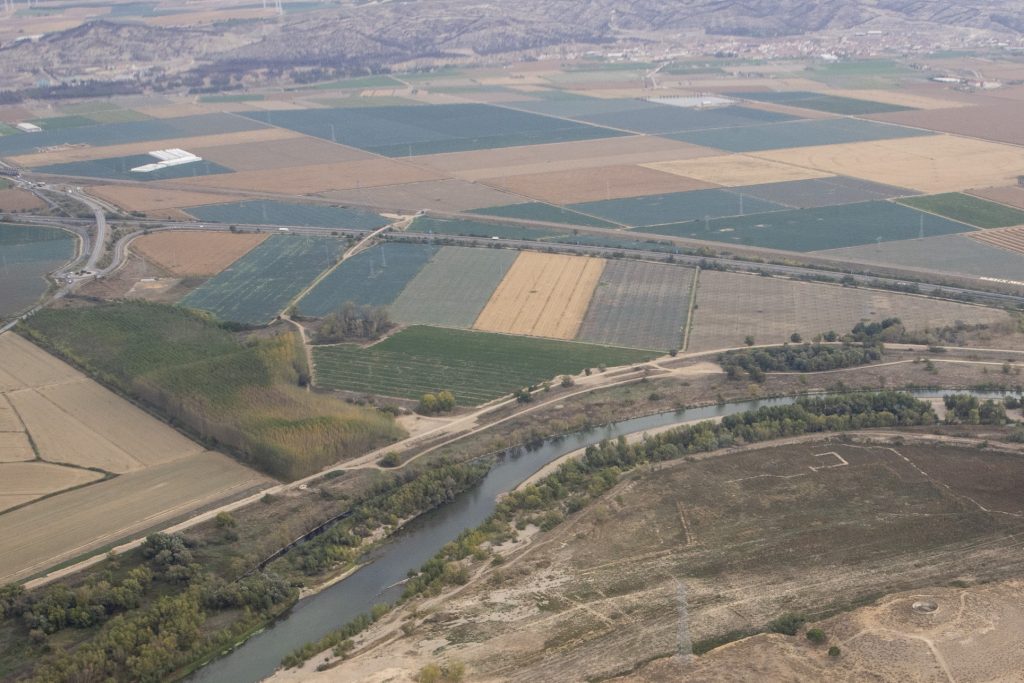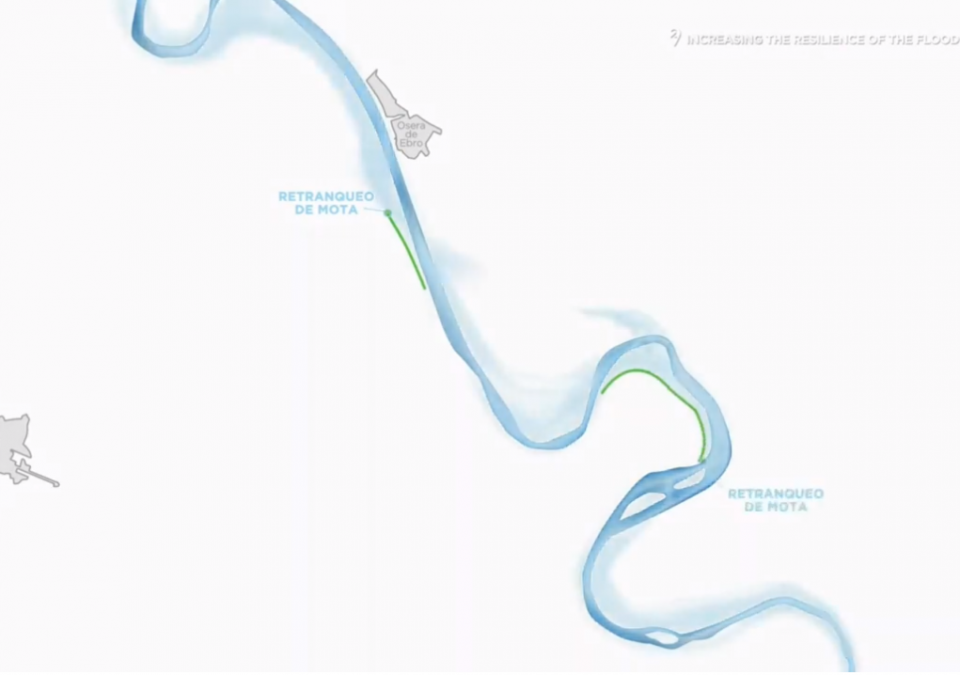New advances in key projects of the LIFE Ebro Resilience P1 for 2024, which is expected to be a busy year in its two tranches. The last step has been the approval of the public information files of the projects of El Señorío (in Castejón, Navarra) and the improvement of flood resilience – phase 1 between Osera de Ebro and Fuentes de Ebro, in Zaragoza.
The technical proposal in both cases is the result of an exhaustive study of alternatives. In addition, they have been the subject of a participatory process with stakeholders and the riparian population through the LIFE project’s stable participatory groups, the so-called co-creation groups and also workshops for the general public.
El Señorío
The “Restoration and morphological adaptation of the meander of El Señorío, in Castejón, Navarra” aims to reduce the risk of flooding in the section; restore the meander to its natural functions and protect and improve the state of the ecosystems. To this end:
- River space will be recovered with the removal of 1.3 km of the existing perimeter dike in the meander.
- A relief channel will be created, recovering an arm of the Ebro River that will allow the diversion of part of the flows when water levels are high.
- The restoration of the meander will be carried out with plantations that promote and accelerate natural revegetation; exotic plant species will be eliminated; the recovery of habitats for fauna species of interest and the inclusion of elements to bring the space closer to the population will be promoted.
- The connection of the natural enclaves preserved on the left bank will be proposed, constituting three ecological corridors that connect them with each other and with the Sotos de Alfaro Nature Reserve, located upstream, and the Ebro River ZEC.
The intervention is part of the so-called “Combined section of actions” of the LIFE Project and is in addition to the action being carried out in the meander of La Roza, in Alfaro, and the action also planned in the Soto de Alfaro (or Soto de Tamarigal), also part of the LIFE Project, and also to the actions carried out through the Ebro Resilience Strategy in the meanders of El Ortigoso, La Nava and El Estajao, in the Ebro River as it passes through the municipalities of Milagro (Navarra) and Alfaro.

In this section, a succession of natural water retention measures are defined that will generate an overall benefit in the Alfaro (La Rioja)-Castejón (Navarra) section. Reconnection of meanders, relief channels, recovery of river branches and recovery of river space as flood plains to recover 45 hectares of river space and improve adaptation and reduce the risk of flooding in 500 hectares of agricultural farms.
The morphological adaptation works will be carried out by TRAGSA under the direction of the CHE and the environmental restoration works by the Autonomous Governments of La Rioja, in the case of La Roza, and Navarra, the latter through its public company GAN-NIK, in the case of El Señorío.
Osera-Fuentes Section
The “Improvement of resilience to floods in the Ebro river, as it passes through Osera de Ebro and Fuentes de Ebro, in Zaragoza. Phase 1”, is part of what is called Zone 2 of the LIFE Ebro Resilience P1 Project.
This first phase, with a budget of 2,946,338.68 €, consists of a morphological adaptation of the Ebro river in two places, the mejana del Conde and the meander of Aguilar. Its objective: the reduction of the effects of flooding and the improvement of the ecological condition of the riverbed. In order to achieve these objectives, the following interventions have been planned:
- Narrowing of the river channel will be eliminated, recovering its drainage capacity during floods.
- Deterioration will be prevented and the condition of present and potentially existing aquatic, terrestrial and wetland ecosystems will be improved, recovering 14 hectares of land as river space, which will be subsequently restored through actions of the LIFE Ebro Resilience P1 Project, and eliminating exotic plant species.
In the Osera de Ebro – Fuentes de Ebro (Zaragoza) section, a second phase will be added, where one of the most innovative interventions of the LIFE proposal is proposed: the creation of so-called buffer zones for lateral flows.
These buffer zones will compartmentalize agricultural farms into cells that will be pre-flooded in a controlled manner during flood episodes, generating water buffers that will minimize damage to farms and infrastructure.
LIFE Project
The LIFE Ebro Resilience P1 project (LIFE20 ENV/ES/00327), approved by the European Commission in the LIFE 2020 call, covers three autonomous communities (La Rioja, Navarra and Aragón), has a duration of 6 years and a total budget of 13,310,350 €, with 55% European funding.
This project is also an example of institutional coordination and cooperation in the intervention section, its partners being the Ministry for Ecological Transition and Demographic Challenge (MITECO), through its companies TRAGSA and TRAGSATEC; the Ebro Hydrographic Confederation; the Government of La Rioja; the Government of Navarra, through Gestión Ambiental de Navarra, S.A. (GAN-NIK); the Government of Aragón and the Aragonese Water Institute.

